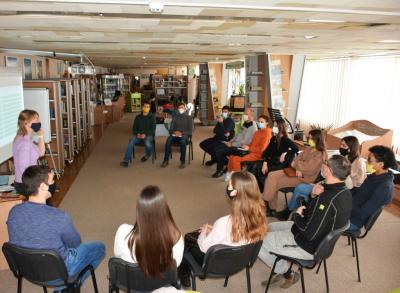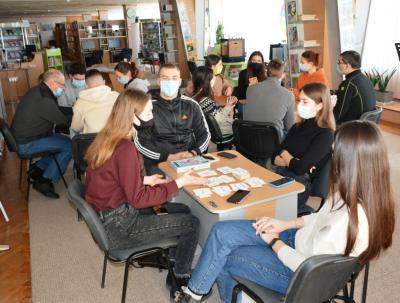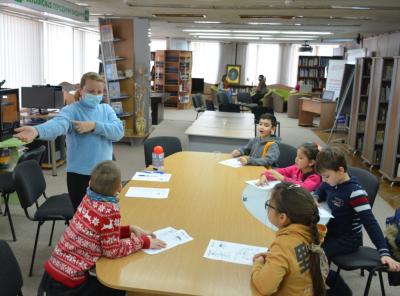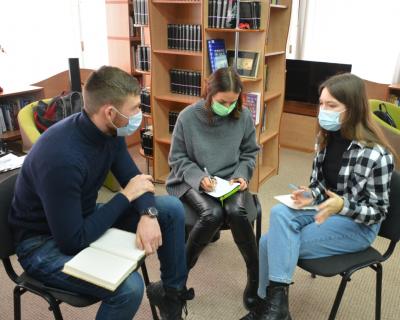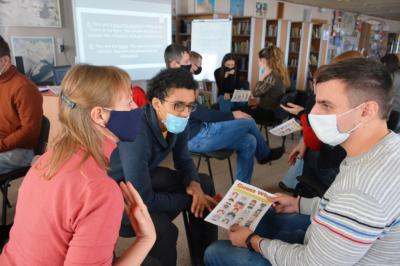Jane C. Wright
Jane C. Wright
Cancer researcher
(1919- 2013)
Few diseases strike such fear in the hearts of young and old alike as cancer. It is an ancient disease. Archaeologists know that cancerous tumors were observed by Egyptian doctors as far back as 1600 B.C., but the ancient Egyptians had no idea what those tumors were. As recently as the 1700s, doctors thought that cancer resulted from some type of peculiar inflammation. Then, during the 1800s, sci¬entists developed the cell theory. They realized that the biological cell is the basic unit of all organisms, and that cells divide, creating new cells to replace those that die. By the late 1800s, they understood that cancer is the wild, uncontrolled growth of cells.
Effective treatment, however, was many years away. Since ancient times, surgeons had attempted to cut out cancerous tumors, but not until the 1930s and 1940s did powerful drugs become available that could kill cancerous cells. This type of treatment, called chemotherapy, was just being developed when Dr. Jane C. Wright began her medical career. She devoted her professional life to the study of powerful drugs and how they can be used to destroy cancers.
Jane Wright was born in New York City on November 30, 1919, into a family of prominent African-American doctors. Her father, Louis Tompkins Wright, was a distinguished surgeon and researcher, who established the Cancer Research Foundation at Harlem Hospital. He also was one of the first black Americans to graduate from Harvard Medical School. Louis Wright’s father, Jane’s grandfather, was among the first graduates of Meharry Medical College in Nashville, Tennessee. And a step-grandfather, William Penn, was the first black man to earn an M.D. degree from Yale Medical School.
Despite being born into such a rich medical tradition, there was no pressure on young Jane to become a doctor. She attended private ele¬mentary and secondary schools in New York City and was an outstand¬ing student. In 1938, she won a four-year scholarship to Smith College. She loved to swim, and in college she set several records. She also devel¬oped a love of art and for a while considered becoming a painter. But in the end, she chose medicine.
After graduating from Smith in 1942, she was awarded a scholar¬ship to New York Medical College, where she continued to be a brilliant student, and became vice president of her class and president of the honor society. After earning her M.D. degree in 1945, she served an internship and residency in internal medicine.
During this time, she met David D. Jones Jr., a recent graduate of Harvard Law School. They married in 1947 and raised two daughters while both parents worked in their professions.
After Dr. Wright completed her training, it was time to settle on a career. For six months in 1949, she worked as a New York City school physician and visiting physician at Harlem Hospital. She soon realized that she wanted to make a contribution to the treatment of cancer and joined her father’s Cancer Research Foundation at Harlem Hospital.
The vivacious young doctor with the infectious laugh had found her life’s work. She began to study how various powerful drugs and combinations of drugs affect different types of tumors. The idea behind all anticancer drugs was that they would kill off cells with particular types of characteristics. For example, some anticancer drugs attack cells that divide rapidly, a trait shared by all cancer cells. Some normal cells also divide rapidly, however, and so these drugs can produce undesir¬able side effects, such as nausea and hair loss, because cells that form hair and the lining of the digestive tract also divide rapidly.
Dr. Wright studied the effects of anticancer drugs on many types of cancer, including leukemia, breast cancer, melanoma, and cancers of the head and neck. Her work helped show that the most effective forms of chemotherapy usually involve combinations of drugs.
In 1952, Jane Wright’s father died, and she took his place as the director of the Cancer Research Foundation. As her reputation grew, she was appointed to other important jobs. She became director of cancer chemotherapy research and instructor in research surgery at New York University Medical Center in 1955. She later became an associate pro¬fessor. In 1967, she was named associate dean and professor of surgery at New York Medical College, where she set up a program to study can¬cer, heart disease, and stroke. Throughout those years, she also served on the staffs of several leading New York hospitals.
Dr. Wright also served as an adviser to agencies of the United States government. From 1964 to 1965, she was a member of the President’s Commission on Heart Disease, Cancer, and Stroke, and from 1966 to 1970 was a member of the National Advisory Cancer Council. She served on the board of trustees of Smith College and the American Cancer Society’s New York division, on the editorial board of the Journal of the National Medical Association, and as vice president of the African Research Foundation.
For her contributions, Dr. Wright received many awards and hon¬ors, including honorary degrees from the Women’s Medical College of Pennsylvania and Denison University. In 1987, Dr. Wright became professor emeritus and was free to pursue her other interests, such as sailing and painting with watercolors.
More detailed information can be found in the "Extraordinary Women of Medicine" Darlene R.Stille, and issued by The Children's Press in the USA.
Information should be used just for educational purposes.


